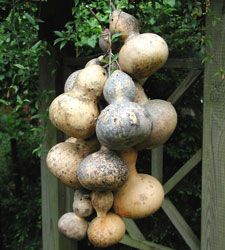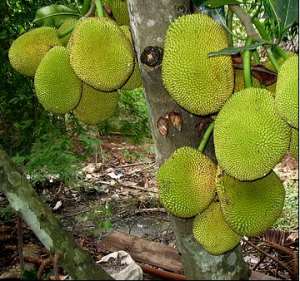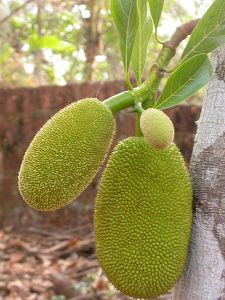A herbaceous, annual climbing plants. It has a long tendrils and simple leaves. Fruits are globular or any other shape depending on the varieties planted. It has hard rind. It has different sizes and form. As vegetable, good to be boiled or stewed.
Plow and harrow the field thoroughly to remove all weeds in the field including those that started to germinate. You need 2 kilograms of seeds enough for 1 hectare. To germinate the seeds quickly, soak seeds in water for 24 hours. Wrap it in moist cloth until it breaks the seedcoat. Sow 2 seeds per hill. Cover the sowed seeds with soil thinly enough to protect it from rain or heat.
Sow the seed in a distance of 1 meter between hills and 4 meters between rows. The soil should be fertile with good aeration capacity. To further enrich the soil composition, apply 20 grams per hill during the planting. Further, sidedress by the application of 10 grams/hill of urea (46-0-0) during the vining of the plants. Apply 2 parts of urea and 1 part of muriate of potash (0-0-60) as sidedressing at the rate of 10 grams per hill after 15 days.
As gourd is a plant vines; it should be accommodated by putting up trellises to protect the fruits from deformation and rotting. The design should be to construct vertical and overhead trellis by using bamboo poles, or wood posts or hardwood trees with connecting materials from post to post with the use of G.I. wires, abaca twines and straw twines. The interconnection will be the concrete support for the plant during its vining and fruiting stage.
Pruning is one way of removing unproductive vines. Let the vines climb in the vertical poles serving as ladder until it reaches the overhead trellis as home during their growing and fruiting stage and support the weight of its foliage and fruits. Prune the lateral (lower) branches of the main stem to have a good branching and fruiting ability.
Make it a point to have an adequate drainage of the field to control waterlogging especially during rainy season.
During dry season, provide enough mulch to conserve moisture in the soil. This is also an adequate because there will be a lesser watering of the plants.
The popular insect pests of gourd plant is leaf folder, yellow beetles and fruit fly. The common diseases were mildew, leaf spot.
It is important to check the plant daily and regularly to see their condition and what necessary steps to be done of any sign of disease infestation and pest problem.
A good sanitation habit is important to control pest and disease. It is important to have a schedule application of pesticides and fungicides during the growing and fruiting period of the plants.
Once the plants started fruiting, utmost attention is needed to harvest the fruits reaching marketable size within 15 days from fruit set to avoid over-mature of fruits. Harvesting be done as often as needed. Use sharp knives to cut the peduncle 5 centimers from the fruit base.







